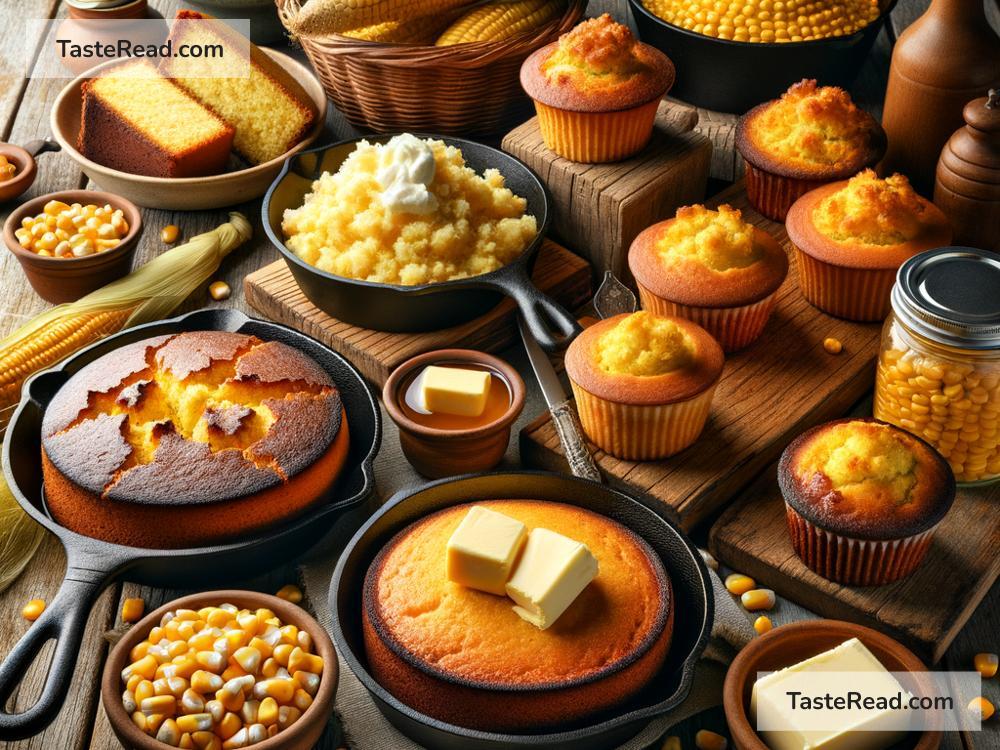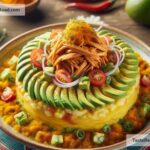Celebrating the Enduring Charm of Traditional Cornbread Variations in the USA
When it comes to comfort food, cornbread holds a special place in the hearts of many people across the United States. This humble dish has been a staple for centuries, loved for its warm, hearty flavor and versatility. Cornbread is more than just a side dish—it’s a symbol of community, tradition, and creativity. What makes cornbread extra special is the way each region in the U.S. adds its own twist to this classic recipe. Let’s explore the enduring charm of traditional cornbread variations across the country, and why it continues to be celebrated today.
A Brief History of Cornbread
Cornbread’s roots go back to the early days of America, when Indigenous Peoples introduced European settlers to corn, or maize. Native Americans showed settlers how to grind corn into meal and turn it into nourishing bread. Since then, cornbread has been a beloved food that adapts easily to different tastes and ingredients.
During difficult times, like the Great Depression or when money was tight, cornbread became even more popular because it was inexpensive and filling. Over time, communities began tweaking the basic recipe to suit their local ingredients and traditions, creating a rich tapestry of cornbread styles that we still enjoy today.
Regional Cornbread Variations: A Flavorful Tour
Each region of the United States has its own take on cornbread, shaped by geography, available resources, and cultural influences. Here are some of the most popular variations:
1. Southern Cornbread
When most people think of cornbread, Southern-style comes to mind. Made with little to no sugar, Southern cornbread is known for its savory, rich taste. It often includes buttermilk, which gives it a tangy flavor, and is cooked in a hot cast-iron skillet to create a crispy golden crust. Many Southerners enjoy their cornbread alongside collard greens, black-eyed peas, or a comforting bowl of chili.
2. Sweet Cornbread
In the Northern U.S., cornbread tends to be sweeter. People add a touch of sugar, honey, or molasses to the batter, turning cornbread into a treat that feels closer to dessert. Fluffy and moist, this style of cornbread pairs beautifully with soups and stews or is enjoyed as-is, fresh from the oven.
3. Johnnycakes
Johnnycakes, also known as journey cakes, are more like flat pancakes made from cornmeal rather than the fluffy breads we know today. This variation hails from New England and traces its history back to Native American traditions. Johnnycakes are cooked on a griddle and can be eaten with butter, syrup, or even savory toppings. Their portability made them popular among early settlers traveling long distances.
4. Hot Water Cornbread
Hot water cornbread is a simple, traditional recipe that likely dates back to enslaved African Americans. It’s made by mixing boiling water with cornmeal and forming the dough into small patties that are fried until golden. Popular in the Southern U.S., hot water cornbread has a crispy exterior and a soft inside—perfect as a side dish to fried chicken or beans.
5. Mexican-Influenced Cornbread
In areas close to Mexico, such as Texas, you’ll find cornbread with added ingredients that bring bold flavors to the table. Diced jalapeños, shredded cheese, and kernels of fresh corn are common additions to give cornbread a kick. This fusion showcases the blending of American and Mexican culinary traditions.
6. Appalachian Cornbread
Cornbread in the Appalachian region often includes sorghum syrup, which gives it a unique sweetness mixed with earthy undertones. Unlike other recipes that might use flour, Appalachian cornbread relies primarily on cornmeal, offering a denser texture. It’s rustic, filling, and steeped in the hardworking spirit of the region.
Why Cornbread Stands the Test of Time
Cornbread isn’t just loved for its taste; it’s cherished because of how it connects us to history and our roots. Families pass down recipes from generation to generation, creating treasured memories in the kitchen. Cornbread reminds us of simpler times, when people relied on what their land could provide to create meals that nourished body and soul.
Its enduring appeal also comes from its flexibility. Whether you like it sweet or savory, baked or fried, cornbread can be adapted to fit your preferences. It’s budget-friendly, easy to make, and pairs well with countless dishes, from barbecue ribs to a fresh summer salad.
How to Celebrate Cornbread Today
You don’t have to wait for a special occasion to celebrate cornbread! Why not try making a regional variation at home? Dust off that cast-iron skillet and experiment with Southern-style cornbread, or spice things up with jalapeño-and-cheese-infused Mexican cornbread. Pair your creation with your favorite meal or enjoy it with a simple spread of butter.
Cornbread festivals across the country also offer a chance to celebrate this iconic dish. For example, the National Cornbread Festival in South Pittsburg, Tennessee, is a lively event with cooking contests, live music, and delicious cornbread tastings.
Conclusion
Cornbread is more than just food—it’s a symbol of resilience, creativity, and community. Every bite of cornbread carries the flavors of history, tradition, and love. From Johnnycakes in New England to skillet-cooked Southern cornbread, these diverse variations highlight the beauty of regional cooking and remind us why this simple dish has endured for so long. No matter which style you prefer, cornbread continues to bring people together and warm hearts across the USA.
So, next time you enjoy a piece of cornbread, remember you’re tasting a slice of American history—and be sure to share the love with others!

